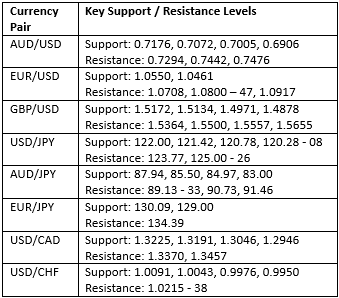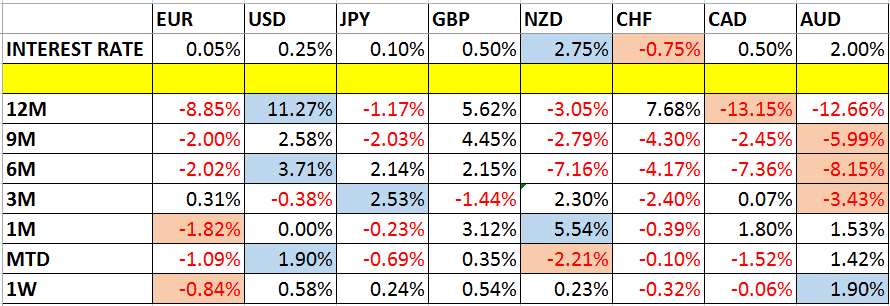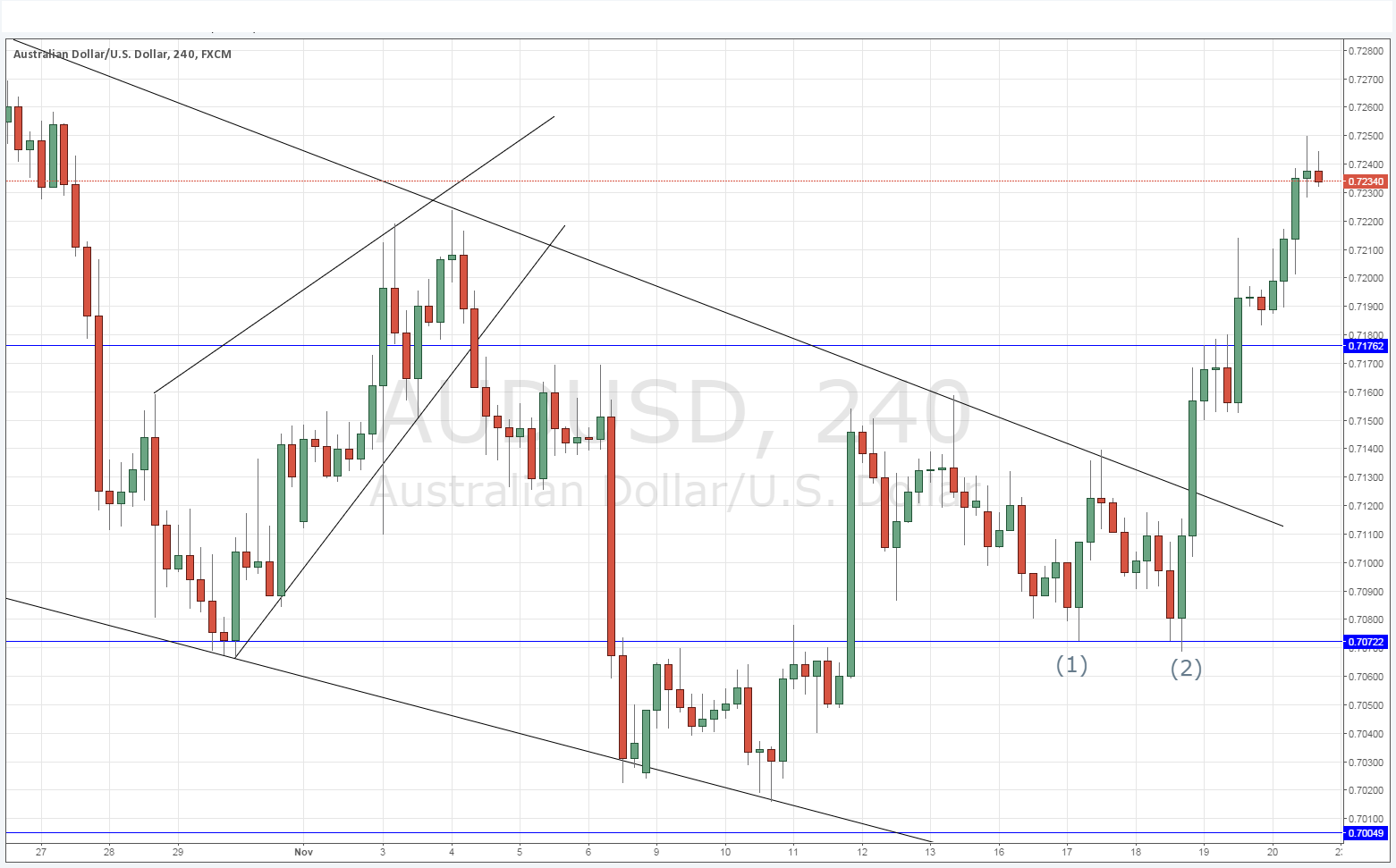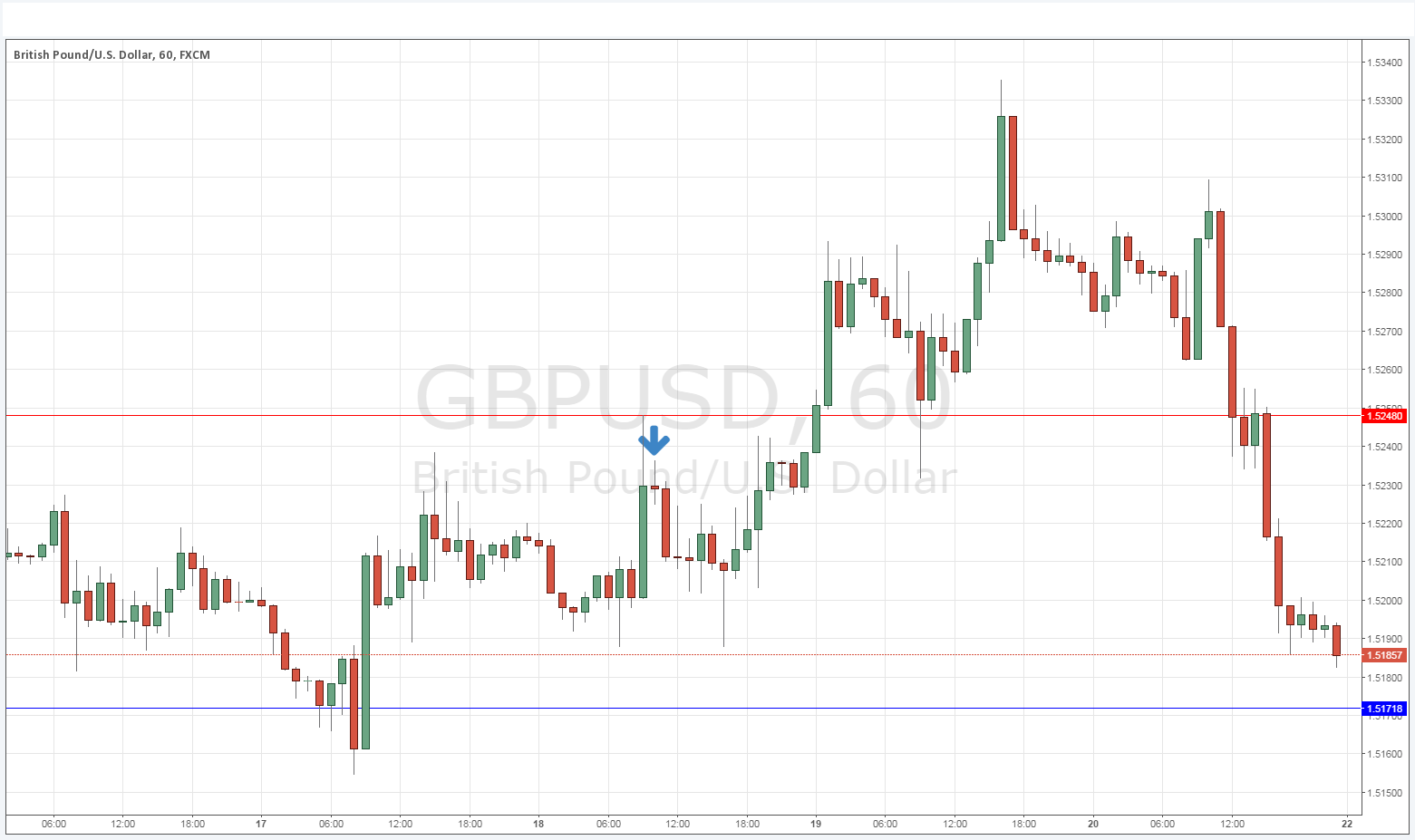This week we’ll begin with our monthly and weekly forecasts of the currency pairs worth watching. The first part of our forecast is based upon our research of the past 11 years of Forex prices, which show that the following methodologies have all produced profitable results:
- Trading the two currencies that are trending the most strongly over the past 3 months.
- Assuming that trends are usually ready to reverse after 12 months.
- Trading against very strong counter-trend movements by currency pairs made during the previous week.
- Buying currencies with high interest rates and selling currencies with low interest rates.
Let’s take a look at the relevant data of currency price changes and interest rates to date, which we compiled using a trade-weighted index of the major global currencies:
Monthly Forecast November 2015
This month we forecast that the most probable movements are short AUD/JPY and AUD/NZD. This forecast has performed negatively so far, as shown below:
Weekly Forecast 22nd November 2015
Last week, we made no forecast.
This week, we again make no forecast, as there were no strong counter-trend movements.
This week saw strength in the AUD and USD, and the greatest relative weaknesses was again in the CHF. The EUR is also weak.
Volatility was slightly higher than the previous week. Approximately 73% of the major and minor currency pairs changed in value by less than 1%. Volatility is only likely to be higher this week if the Federal Reserve surprises during its scheduled announcement Monday.
You can trade our forecasts in a real or demo Forex brokerage account.
Key Support/Resistance Levels for Popular Pairs
At the FX Academy, we teach that trades should be entered and exited at or very close to key support and resistance levels. There are certain key support and resistance levels that should be watched on the more popular currency pairs this week, which might result in either reversals or breakouts:

Let’s see how trading two of these key pairs last week off key support and resistance levels could have worked out:
AUD/USD
We had expected the level at 0.7072 might act as support, as it had acted previously as both support and resistance. Note how these “flipping” levels can work really well. The H4 chart below shows how twice during the past week the price fell to and rejected this level almost to the pip, before going on to form bullish outside candles. The first example would not have seen reward equal risk, but the second example marked at (2) would be a nicely profitable trade, with a strong breakout above a long-term bearish trend line.
GBP/USD
We had expected the level at 1.6248 might act as resistance, as it had acted previously as both support and resistance, and also because it was very close to a psychological number at 1.5250. Note how these “flipping” levels can work really well. The H1 chart below shows how the price rose to reject this level to the pip during early part of Wednesday’s London session, rejecting it and forming a bearish inside candle marked by the downwards arrow. It could have been a profitable trade albeit with only a very average reward to risk profile, reaching a maximum of only 35 pips of profit.
You can trade our forecasts in a real or demo Forex brokerage account to test the strategies and strengthen your self-confidence before investing real funds.





